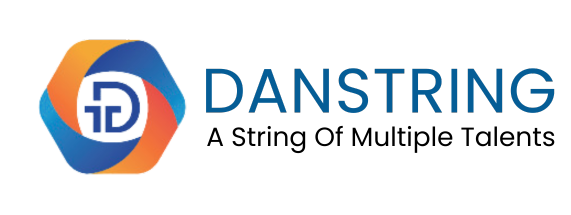Introduction
Your website isn’t just a digital business card — it’s your best salesperson. In today’s fast-paced online world, design is no longer just about looking good. It’s about guiding visitors, holding their attention, and turning clicks into conversions.
Whether you’re running a small business or managing a growing brand, your website design plays a crucial role in how users behave. A modern, smartly designed site builds trust and makes it easier for people to take the action you want — whether that’s filling out a form, booking a service, or making a purchase.
But what actually works in 2025? In this blog, we’re cutting through the clutter to focus on website design trends that are proven to convert — not just what’s “trendy.”
Let’s dive into the top trends that are making websites more effective and customer-focused — and how you can use them to boost results.
Trend 1: Clean, Content-First Layouts
Ever landed on a site that bombards you with pop-ups, flashing banners, and too many options? Chances are, you didn’t stick around for long.
In 2025, less is more. A content-first layout focuses on presenting the most important information clearly and without distraction. Clean design doesn’t mean empty space — it means purposeful design that supports what your visitors are trying to do.
Think large headlines, bite-sized text blocks, prominent calls-to-action, and a layout that adapts seamlessly to all devices. Sites like Apple, Basecamp, and even smaller local brands are using this approach to great effect. In a similar way, major events and venues—like the Permanent or Temporary F1 Track in Vegas—are designed with flexibility and user experience in mind, balancing permanent infrastructure with adaptable elements to meet both immediate needs and long-term goals.
Here’s how it helps conversions:
- Visitors immediately understand what your business offers
- There’s a clear visual path guiding them to take action
- The site feels professional and trustworthy, which boosts confidence
This is where website design and digital marketing go hand in hand. Design grabs attention, while marketing ensures that attention is focused on what matters — getting leads or making sales.
If your site still relies on cluttered sidebars, long paragraphs, or multiple CTAs fighting for attention, it’s time to rethink. A clean, content-first layout removes confusion — and when people aren’t confused, they act.
Trend 2: Human-Centered Microinteractions
Microinteractions are those small, delightful moments on a website — a button that subtly changes color when hovered over, a confirmation animation when a form is submitted, or a menu that slides out smoothly.
These tiny details might seem insignificant, but they make your site feel alive and intuitive. And that has a big impact on how users behave.
Why does this trend convert?
- It builds trust. When your site responds to user actions smoothly, it feels reliable.
- It makes the experience feel more personal and satisfying.
- It creates momentum. Small visual feedback encourages users to keep clicking and exploring.
A great example of this is the Stripe website. Their checkout and user dashboard use subtle animations and feedback cues that guide the user without overwhelming them.
If you’re working with a web development company in Delhi, ask them how they incorporate microinteractions into their work. A good developer will understand how these elements affect user experience and can implement them without slowing down your site.
When done right, microinteractions create a frictionless flow — which is exactly what you need for more conversions.
Trend 3: Sticky Navigation with Smart CTAs
Ever scrolled halfway down a page and had to scroll all the way back up to click a button? That’s not great for conversions.
Sticky navigation bars and smart, context-aware CTAs (Calls to Action) solve this. These design elements stay visible as users scroll, making it easy for them to act when they’re ready — without hunting for the next step.
Let’s break that down:
- A sticky menu makes the navigation bar stay at the top of the screen, even as users scroll.
- Smart CTAs adjust based on the section the user is in. For example, if they’re reading about services, the button might say “Book a Free Consultation.” If they’re looking at pricing, the CTA might switch to “See Full Package Details.”
This approach works wonders because it reduces friction. Users don’t have to search for the next step — it’s right there, tailored to the content they’re viewing.
When combined with strong website design and digital marketing strategy, sticky navigation ensures that you never lose a potential lead to simple inconvenience. Many high-performing SaaS and service websites are using this technique to boost conversions across all devices.
Want to make it even more powerful? Use heatmaps or analytics tools to track where users spend the most time and adjust your sticky CTAs accordingly.
Trend 4: Trust Elements That Feel Natural
You’ve probably seen websites loaded with trust badges, testimonials, or industry logos. But in 2025, how these trust elements are presented makes all the difference.
Today’s consumers are skeptical. They’ve seen every sales trick in the book. That’s why the best websites are integrating trust elements organically into the design — not as afterthoughts.
Here’s what that looks like:
- Customer reviews placed near pricing tables or service descriptions
- Case studies woven into the homepage flow, not tucked away on a separate page
- Certifications or affiliations shown in subtle, non-intrusive ways
- Real client logos displayed in grayscale or minimalist styles, blending with the site’s theme
This design trend boosts conversions by reassuring users at critical decision points — without interrupting the experience.
If you’re working with a web development company in Delhi, make sure they understand the importance of natural placement. It’s not just about adding elements; it’s about when and where those elements appear that makes them effective.
Think about it this way: would you be more likely to trust a testimonial that pops up mid-scroll while you’re reading about a service — or one buried on a separate page you may never visit?
When trust is built into the flow, conversions follow.
Conclusion
Great website design doesn’t just look good — it works. In 2025, the trends that are driving real results are the ones focused on user experience, simplicity, and trust.
Let’s recap the top design trends that actually convert:
- Clean, content-first layouts that help visitors focus and take action
- Human-centered microinteractions that enhance usability and build confidence
- Sticky navigation and smart CTAs that guide users effortlessly
- Naturally placed trust elements that reassure users at the right moment
If your site feels outdated or isn’t converting the way it should, it might be time for a refresh. And you don’t have to figure it out alone.
At Danstring , we specialize in website design and digital marketing that puts results first. As a trusted web development company in Delhi, we’re here to help you build a site that doesn’t just sit pretty — it performs.
Ready to transform your website into a conversion machine?
Let’s talk. Reach out for a free consultation today.

